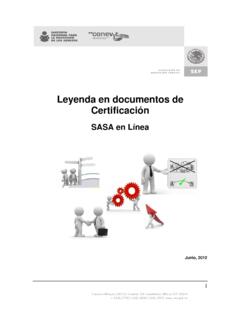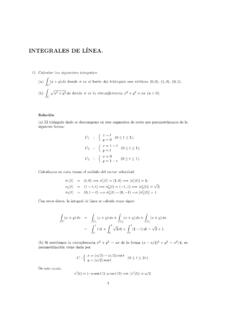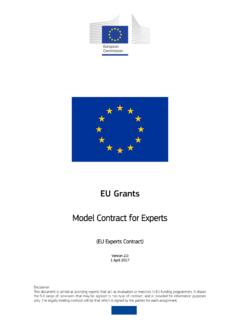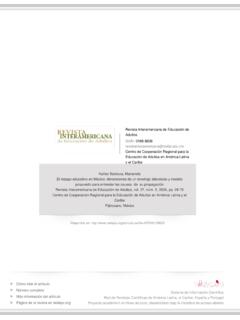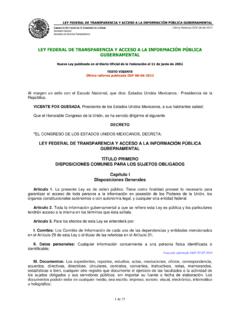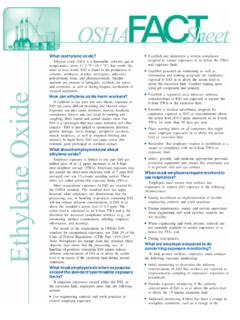Transcription of Rail freight transport in the EU: still not on the right track
1 Special Report Rail freight transport in the EU: still not on the right trackEN 2016 NO 08 EUROPEANCOURTOF AUDITORSEUROPEAN COURT OF AUDITORS 12, rue Alcide De Gasperi 1615 Luxembourg LUXEMBOURGTel. +352 4398-1 Enquiries: Website: : @EUAuditorsECAMore information on the European Union is available on the internet ( ).Luxembourg: Publications Office of the European Union, 2016 Print ISBN 978-92-872-4610-3 ISSN 1831-0834 QJ-AB-16-008-EN-CPDF ISBN 978-92-872-4603-5 ISSN 1977-5679 QJ-AB-16-008-EN-NEPUB ISBN 978-92-872-4593-9 ISSN 1977-5679 QJ-AB-16-008-EN-E European Union, 2016 Reproduction is authorised provided the source is any use or reproduction of Figure 3, permission must be sought directly from the copyright freight transport in the EU.
2 still not on the right track (pursuant to Article 287(4), second subparagraph, TFEU)Special ReportEN 2016 NO 0802 Audit teamThe ECA s special reports set out the results of its performance and compliance audits of specific budgetary areas or management topics. The ECA selects and designs these audit tasks to be of maximum impact by considering the risks to performance or compliance, the level of income or spending involved, forthcoming developments and political and public performance audit was produced by Audit Chamber II headed by ECA Member Henri Grethen which specialises in structural policies, transport and energy spending areas.
3 The audit was led by ECA Member Ladislav Balko, supported by the Head of his private office, Branislav Urbanic and Zuzana Frankova, Attach ; Pietro Puricella, Principal Manager; Fernando Pascual Gil, Head of Task; Kurt Bungartz, Aleksandra Klis-Lemieszonek, Nils Odins, Jelena Magermane and Di Hai, left to right : B. Urbanic, D. Hai, N. Odins, L. Balko, F. Pascual Gil, A. Klis-Lemieszonek, P. Puricella, Z. GlossaryI XVII Executive summaryVI VII About this audit VIII XV What the Court found XVI XVII What the Court recommends 1 13 Introduction1 4 Background5 6 Rail freight stakeholders and forms7 13 EU interventions regarding rail freight transport14 18 Audit scope and approach19 93 Observations19 29 The performance of rail freight transport in the EU remains unsatisfactory overall19 22 Road remains the leading mode of freight transport in the EU23 27 Some Member States have nevertheless managed to increase the proportion of goods transported by rail28 29 The poor performance of rail freight transport has not been
4 Helped by the low speed of trains30 73 Many strategic and regulatory factors prevent rail freight from being more competitive30 31 Rail freight must be made economically attractive so that the EU s transport policy objectives can be achieved32 36 The Commission has made efforts to improve the framework conditions for the transport of goods by rail, but a single European railway area is still a long way from being achieved04 Contents 37 43 Rail freight market liberalisation has achieved uneven progress in Member States and certain anti competitive practices still prevail44 57 Traffic management procedures have not been adapted to the needs of the rail freight sector.
5 Even within EU rail freight corridors58 63 Administrative and technical constraints still hamper the competitiveness of rail freight64 67 The lack of transparency on the performance of the rail freight sector has not stimulated improvements in customer service68 73 Charges for accessing rail infrastructure compare unfavourably to those for accessing roads74 93 The infrastructure needs of the rail freight sector should be better targeted by EU funding74 77 Overall more EU funds were allocated to roads than to rail infrastructure78 83 When allocated to rail, EU funds did not specifically target rail freight needs84 89 Examined rail infrastructure projects have delivered or are likely to deliver expected outputs.
6 But so far no general improvements in rail freight transport performance have been achieved90 93 The poor maintenance of the rail network affects the sustainability and the performance of EU funded infrastructure9 4 10 0 Conclusions and recommendations Annex I Legislative acts governing railway packages Annex II EU allocations to rail per Member State for 2007 2013 Annex III List of projects examined by the Court Annex IV Rail freight transport as a share of total inland freight transport Annex V Rail freight modal share (inland freight ) in the five Member States visited (2000 to 2013) Annex VI Case study on the cross border section between Spain and France (rail freight corridor 6 Mediterranean) Reply of the Commission05 GlossaryCohesion Fund: A fund aimed at strengthening economic and social cohesion within the European Union by financing environment and transport projects in Member States with a per capita GNP of less than 90 % of the EU Europe Facility (CEF): A facility which since 2014 has provided financial aid to three sectors: energy, transport and information and communication technology (ICT).
7 In these three areas, the CEF identifies investment priorities that should be implemented in the coming decade, such as electricity and gas corridors, the use of renewable energy, interconnected transport corridors and cleaner modes of transport , high-speed broadband connections and digital Rail Traffic Management system (ERTMS): A major European industrial project aimed at replacing the different national train control and command systems to promote interoperability. It has two basic components: the European Train Control System (ETCS), and a radio system for providing voice and data communication between the track and the train, using standard GSM frequencies specifically reserved for rail (GSM-R).
8 European Regional Development Fund (ERDF): An EU fund aimed at reinforcing economic and social cohesion within the European Union by redressing the main regional imbalances through financial support for the creation of infrastructure and productive job-creating investment, mainly for freight operator: The rail operator with a historically dominant position in the national market, deriving from a single integrated company which used to be responsible for the management of the rail infrastructure and provision of transport manager: A body or undertaking responsible in particular for establishing, managing and maintaining railway : Interoperability is defined as the capability to operate on any stretch of the rail network without any difference.
9 In other words, the focus is on making the different technical systems on the EU s railways work and Networks Executive Agency (INEA): The Innovation and Networks Executive Agency (INEA) is the successor of the Trans-European transport Network Executive Agency (TEN-T EA), which was created by the European Commission in 2006 to manage the technical and financial implementation of its TEN-T programme. INEA, with its headquarters in Brussels, officially started its activities on 1 January 2014 in order to implement parts of the Connecting Europe Facility (CEF), Horizon 2020, and other legacy programmes (TEN-T and Marco Polo 2007-2013).
10 Modal share: The share of total journeys, volume, weight, vehicle or transport performance (vehicle, tonne- or passenger-kilometres) of alternative modes of transport , such as road, rail, inland waterways, maritime and air transport , including non-motorised transport . In this report, modal share refers to rail freight entrant: Any rail freight operator (other than the incumbent freight operator) licensed according to the applicable EU and national rules, operating in the competitive One stop shop (OSS): In the context of this report a single point of contact established for each rail freight corridor to deal with requests for international : The capacity to run a train between two places over a given freight corridor (RFC).






